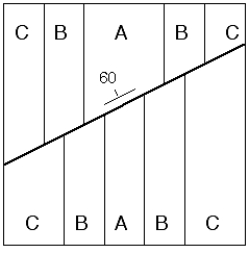Multiple Choice
Units A, B, and C are sedimentary rocks; unit A is the oldest and unit C is the youngest. The sedimentary rocks are cut by a fault, indicated by the bold line. The fault dips 60° to the northwest as shown by the strike and dip symbol.

-Why is unit A wider north of the fault than it is south of the fault?
A) Deeper levels of the structure are exposed on the north side of the fault.
B) Erosion has removed most of unit A south of the fault.
C) Faulting has thinned unit A south of the fault.
D) Unit A had a variable thickness prior to faulting.
Correct Answer:

Verified
Correct Answer:
Verified
Q26: Downfolds, or troughs, of layered rock are
Q27: <img src="https://d2lvgg3v3hfg70.cloudfront.net/TBMC1067/.jpg" alt=" -In the metamorphic
Q28: Which of the following forces is the
Q29: Which of the following types of pressure
Q30: <img src="https://d2lvgg3v3hfg70.cloudfront.net/TBMC1067/.jpg" alt=" -In the metamorphic
Q32: A low-angle reverse fault is called a
Q33: A plunging fold is one in which
Q34: <img src="https://d2lvgg3v3hfg70.cloudfront.net/TBMC1067/.jpg" alt=" -What type of
Q35: Which is an appropriate approximate value for
Q36: Units A, B, and C are sedimentary